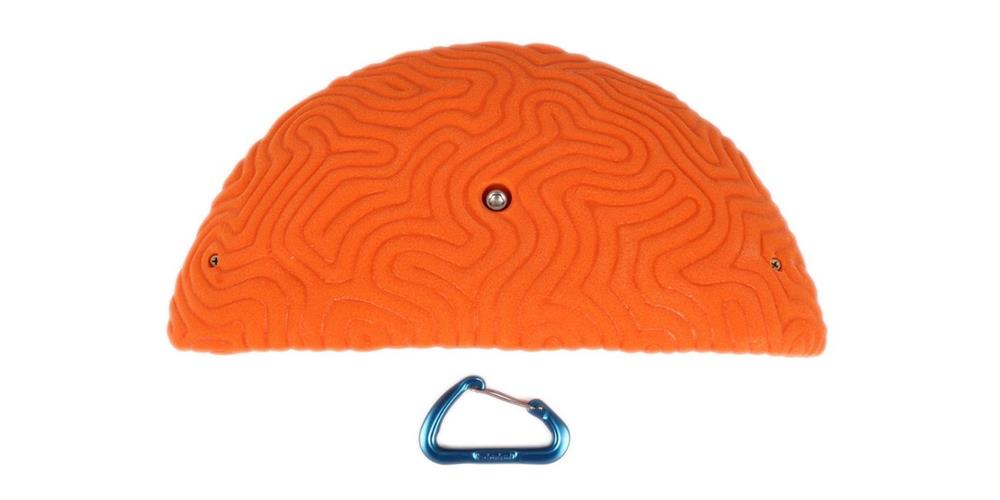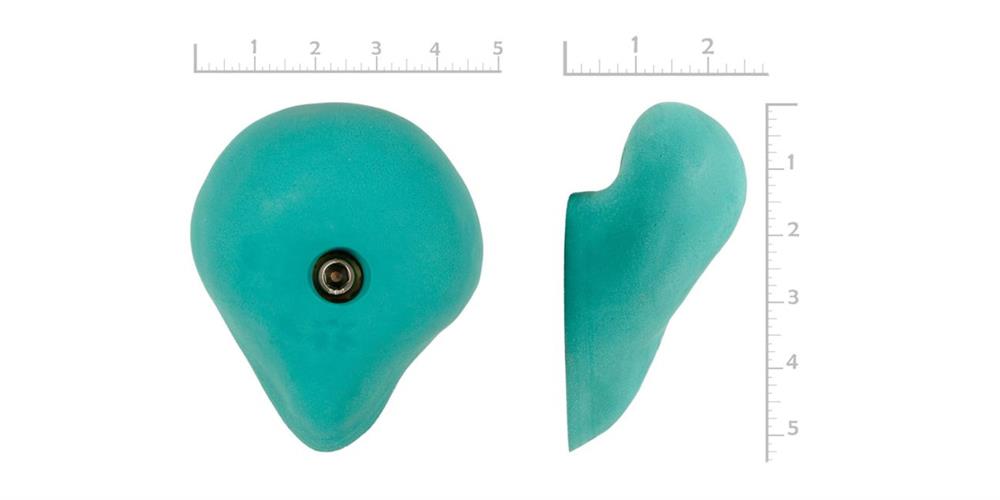In the world of rock climbing, every detail matters, and the size of your climbing holds is no exception. Whether scaling majestic outdoor cliffs or challenging yourself on indoor walls, the size of the holds you choose significantly influences your climbing performance. Use this guide to understand why the size of your rock climbing holds is important and how to leverage this knowledge to enhance your climbing adventures.
Understanding Climbing Holds
Climbing holds are the essential grips attached to climbing walls that mimic natural rock features. These holds come in various shapes and sizes, each serving a unique purpose. From jugs, which are large and easy to grip, to small crimps, which require finesse, holds dictate the flow of your climb.
There are many shapes and sizes of holds that make your wall unique. Understand the function and characteristics of different hold types to make informed decisions about your routes and the best sizes for your wall.
Impact of Hold Size on Climbing Technique
Hold size plays a pivotal role in shaping your climbing technique. Large holds give you more stable body positioning, making them ideal for beginners or those looking to conserve energy during long climbs.
Conversely, small holds demand precise finger placement and body tension, testing your technical skills and strength. Adapting your movement based on hold size is crucial for efficient climbing. Master techniques suited to various hold sizes and optimize your climbing style to achieve smoother ascents.

Safety Considerations for Hold Sizes
Regardless of a short or high climb, safety is a must for any climb, and the size of your holds impacts your risk factors. Larger holds provide more surface area for grip, reducing the likelihood of sudden slips. However, they also falsely instill confidence, leading to complacency.
On the other hand, smaller holds require attention to detail and often increase the risk of falling if not approached with caution. Practice safe techniques, such as maintaining three points of contact and planning your moves, to mitigate risks regardless of hold size.
Avoid injuries that derail your climbing progress with thoughtful hold size selection and help minimize risks. Use holds that align with your current strength and skill level to reduce the likelihood of overexertion and strain.
Additionally, pay attention to your body’s signals and incorporate proper warm-up routines to prevent common climbing injuries. Remember, pushing your limits is essential for growth, but safety should always remain a priority.
The Science of Grip Hold Size and Strength
Grip strength is a fundamental aspect of climbing that the size of your holds can directly influence. Larger holds allow you to engage more fingers, distributing weight evenly and minimizing strain. Placing your fingers on a larger surface gives you some leeway as you scale, allowing your arms to move in a comfortable, less restrained way.
Smaller holds, however, demand a focused grip, often targeting specific finger muscles. Your chances of losing your grip increases as holds become smaller, making your body move with more effort to ensure you have the best grip.
Developing grip strength for different hold sizes is essential for climbing endurance. Incorporate exercises such as hangboard training and finger curls into your routine to enhance your ability to easily handle varied hold sizes.
Choosing the Right Hold Size for Your Skill Level
Tailoring your hold size to your skill level accelerates your climbing progression. Beginners benefit from larger holds that offer stability and confidence as they build foundational skills.
Intermediate and advanced climbers, on the other hand, challenge themselves by incorporating smaller holds that refine technique and strength. Gradually scaling up hold sizes as you advance keeps you engaged and motivated while ensuring you are continuously honing your abilities.
Hold Size and Climbing Styles
Different climbing styles call for different hold sizes. The movements used in these climbing styles pair well with certain holds.
Bouldering involves dynamic movements on smaller holds, requiring explosive power and precise footwork. Sport climbing, with its longer routes, benefits from a mix of hold sizes to maintain rhythm and conserve energy. Rock climbing hold size is important when making routes that align with your preferred climbing style. Selecting the right sizes gives you an opportunity to tailor your training and route selection, maximizing your performance and enjoyment.
Training With Varied Hold Sizes
Incorporate varied hold sizes into your training regimen to become a versatile climber. Regular practice on holds of different sizes exposes you to various challenges that enhance your adaptability.
Structured exercises, such as circuit training and mock routes, simulate real-world climbing scenarios and improve your problem-solving abilities. This approach strengthens your physical capabilities and builds mental resilience.

Innovative Hold Designs and Their Sizes
The climbing industry continuously evolves, with innovative hold designs enhancing training and performance. Modern holds often feature ergonomic shapes that cater to diverse grip preferences and climbing styles. Atomik Climbing Holds has many products suited for innovative climbing experiences, including our climbing jugs, which come in various colors and sizes for people of any skill level.
These designs offer climbers more options to customize their experiences, allowing for targeted training and creative route-setting. Exploring new hold designs and experimenting with their sizes can open up exciting possibilities in your climbing journey.
Customizing Your Climbing Experience With Hold Size
One of the joys of climbing is the ability to tailor your routes and challenges. Mixing hold sizes creates dynamic climbs that test various aspects of your skills. Personalize your climbing experience by integrating different sizes and encouraging experimentation and creativity.
Create a route using crimps and slopers that provide various challenges when using variable sizes for each hold. Whether you’re developing your routes or tackling existing ones, the ability to adapt hold sizes adds an element of excitement to your climbing routine.
Expert Tips on Hold Size Selection
Seek guidance from seasoned experts at Atomik Climbing Holds to make the most of your climbing endeavors. Professionals emphasize the importance of gradual progression when introducing new hold sizes to your routine.
Avoid common mistakes, such as overestimating your capabilities or neglecting proper form, for a safe and productive climbing experience. Trust our expert advice and empower yourself to make informed choices that drive your climbing growth.
No matter where you build your climbing wall in your home, hold size is a critical factor that profoundly influences your experience and progress. Understand the nuances of hold size selection and equip yourself with the tools to enhance your technique, safety, and enjoyment.
Remember, the climbing community thrives on exploration and experimentation. Don’t hesitate to test different hold sizes, push your limits, and discover the holds that resonate with your climbing aspirations. Whether you’re bouldering or sport climbing, the knowledge gained from leveraging hold size awareness will undoubtedly elevate your climbing game.




Leave your comment